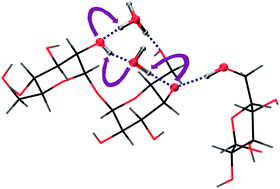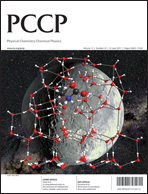Primary free radical formation in trehalose dihydrate single crystals X-irradiated at 10 K was investigated at the same temperature using X-band Electron Paramagnetic Resonance (EPR), Electron Nuclear Double Resonance (ENDOR) and ENDOR-induced EPR (EIE) techniques. The ENDOR results allowed the unambiguous determination of six proton hyperfine coupling (HFC) tensors. Using the EIE technique, these HF interactions were assigned to three different radicals, labeled R1, R2 and R3. The anisotropy of the EPR and EIE spectra indicated that R1 and R2 are alkyl radicals (i.e.carbon-centered) and R3 is an alkoxy radical (i.e.oxygen-centered). The EPR data also revealed the presence of an additional alkoxy radical species, labeled R4. Molecular modeling using periodic Density Functional Theory (DFT) calculations for simulating experimental data suggests that R1 and R2 are the hydrogen-abstracted alkyl species centered at C5′ and C5, respectively, while the alkoxy radicals R3 and R4 have the unpaired electron localized mainly at O2 and O4′. Interestingly, the DFT study on R4 demonstrates that the trapping of a transferred proton can significantly influence the conformation of a deprotonated cation. Comparison of these results with those obtained from sucrose single crystals X-irradiated at 10 K indicates that the carbon situated next to the ring oxygen and connected to the CH2OH hydroxymethyl group is a better radical trapping site than other positions.

You have access to this article
 Please wait while we load your content...
Something went wrong. Try again?
Please wait while we load your content...
Something went wrong. Try again?


 Please wait while we load your content...
Please wait while we load your content...